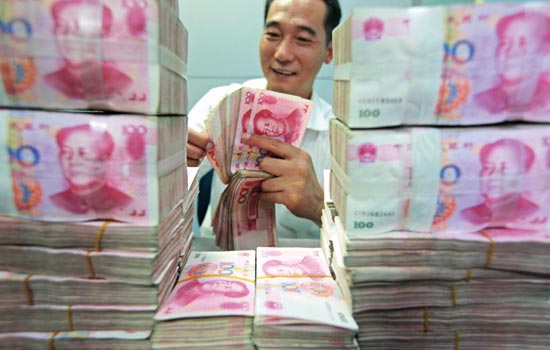
Changes would help development of non-manufacturing business
Expanding reform of value-added tax will help boost China's service sector and change its position as the "world's factory", experts and officials said.
|
 |
|
Under the current taxation policy, the country's service sector faces a heavier tax burden, paying twice, while the manufacturing sector paid less and therefore entered an era of rapid growth. [Photo/China Daily]? |
"If it wasn't for 'half-way' complete VAT reform, China would not have become the world's largest manufacturer," Xu Shanda, former vice-minister of the State Administration of Taxation, said at a recent forum in Shanghai.
According to Xu, VAT reform was originally designed to replace business tax in both manufacturing and service sectors when first introduced in 1994, but it was only implemented in the former to protect the tax revenue of local governments.
The reform of the taxation system in 1994 was aimed at reconstructing tax income sources shared between central and local governments, with a respective target of 55 percent and 45 percent.
However, under a VAT system, local governments can only retain a quarter of the income so business tax was retained in the service sector, which was considered not as important at that time, as a compromise, Xu said.
As a result, the service sector has faced a heavier tax burden, paying twice, while the manufacturing sector paid less and therefore entered an era of rapid growth.
A study by the China Center for Economic Research at Peking University showed that the overall tax rate for the service sector under the current business tax system is 18.2 percent if converted into VAT standard, higher than the VAT rate of 17 percent.
With few tax preferences such as the export tax rebate policy in the manufacturing sector, "Served by China" is no comparison with "Made in China" in the global market.
In general, the proportion of the service sector in a country's economic structure should be around 55 percent when the country enters the mid-income era, economists say.
For China, the figure was only 43.1 percent when the country's per capita gross domestic product exceeded $5,400 in 2011, according to International Monetary Fund data.
China vowed to increase the proportion of the service sector in its economic output by 3 percentage points during the 11th Five-Year Plan (2006-10), but ended up missing the target. A heavy tax burden was blamed as one of the main reasons for the failure.
Yet authorities set an even more ambitious goal of a 4-percentage-point increase during the 12th Five-Year Plan (2011-15), and high hopes were placed on tax reform in the service sector to facilitate the achievement of the target.
Wang Zixian, a researcher with the Ministry of Commerce, said the service sector should learn from the development of the manufacturing sector and first be tested in China's coastal areas, expanding nationwide later after learning from experience.
"But the VAT reform pilot in Shanghai was only launched this year. If it can be expanded to more areas next year, and another year is wasted spent summing up the experience, we'll again miss the target," said Zheng Xinli, vice-chairman of the China Center for International Economic Exchange, who is also a guest economist for China Daily.
"The key is to speed up the reform," Zheng said.
Former vice-minister Xu said: "The significance of this reform may not be obvious at the moment but will emerge within several years."
He added that the reform will boost China's service sector and encourage businesses to employ more specialized operations.
"It will have a profound impact on the Chinese economy on a similar scale to that of the land reform in the 1980s," Xu said.
weitian@chinadaily.com.cn


 Washington to remain focused on Asia-Pacific
Washington to remain focused on Asia-Pacific RQFII target blue chips amid bear market
RQFII target blue chips amid bear market Australian recall for top two exporters
Australian recall for top two exporters China fears new car restrictions
China fears new car restrictions